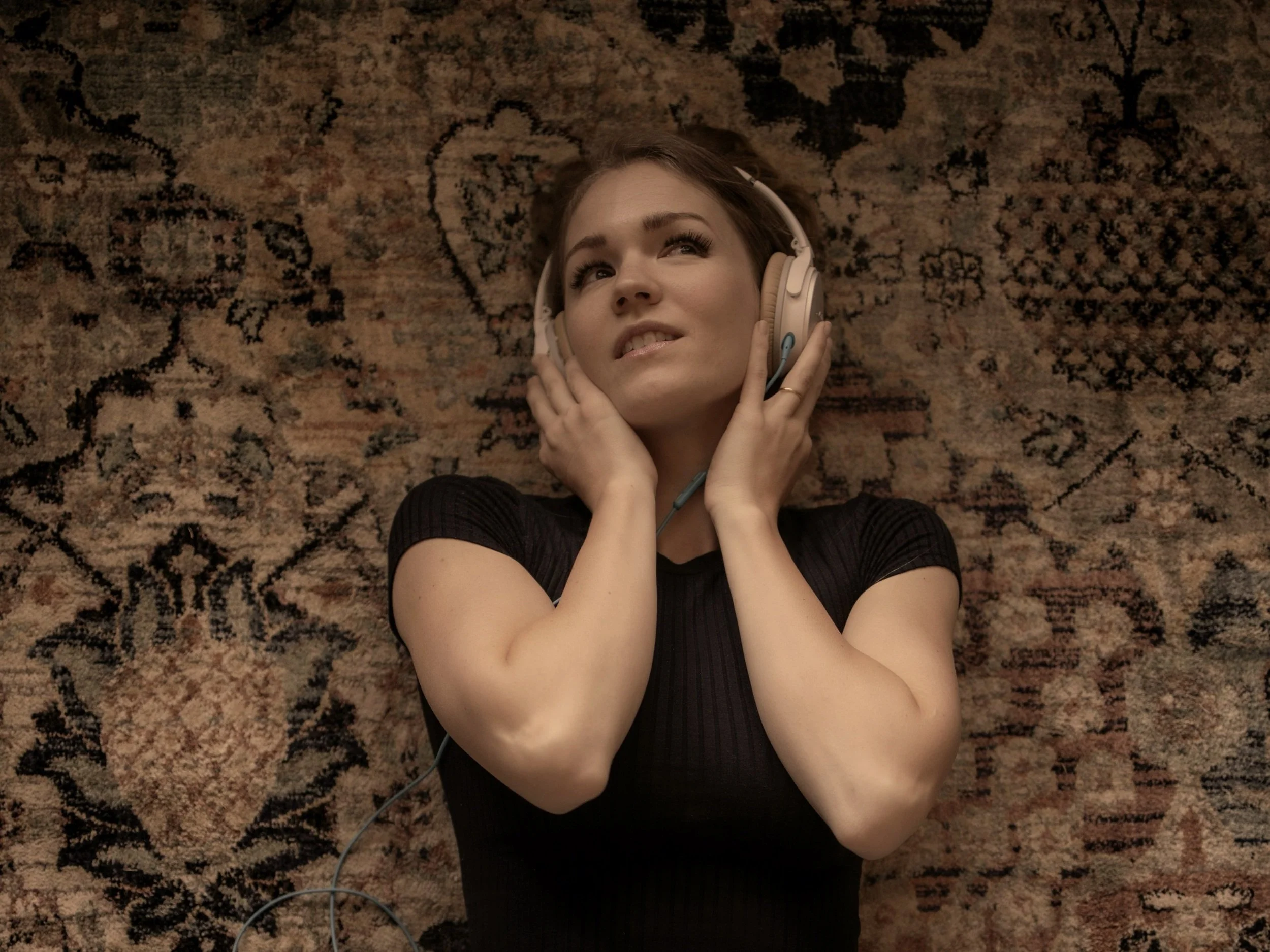Tuning in. How to tell what you’re really feeling (and why it matters)
Photo by Alexander Jawfox on Unsplash
Have you ever felt “off” but couldn’t quite explain why? You go about your day with a heaviness in your chest or a tight jaw, but when someone asks what’s wrong, you pause... and genuinely don’t know.
That’s the thing about emotions - they don’t always introduce themselves clearly. Sometimes they sneak in sideways, dressed up as stress, exhaustion, or just being “in a mood.” And unless we stop and tune in, they can end up running the show from backstage.
Learning to recognise what we’re really feeling is one of the most powerful aspects of emotional intelligence - and one of the most overlooked.
The noise that gets in the way
In a world that moves fast and asks us to move faster, it’s no wonder we often lose track of our inner signals. We’re bombarded with to-do lists, social expectations, and constant noise - both external and internal. Somewhere in there, our emotions start to blur together.
Anxiety disguises itself as irritation. Sadness hides behind sarcasm. Resentment masquerades as detachment. And before we know it, we’re reacting to the world from feelings we haven’t even named.
“Anxiety disguises itself as irritation. Sadness hides behind sarcasm. Resentment masquerades as detachment. And before we know it, we’re reacting to the world from feelings we haven’t even named.”
For women, this is especially tricky. We've often been taught to prioritise how others feel before considering our own. To keep the peace. To be “fine.” To be accommodating, even when we’re unraveling inside.
But here's the truth: if we can’t name what we feel, we can’t respond to it with clarity. We can’t meet our needs, express our boundaries, or even ask for help - because we’re not quite sure what’s going on inside.
Tuning in is the first step toward changing that.
Why naming emotions matters
When we put words to our feelings, something shifts. The research backs it up - simply labelling an emotion can reduce its intensity. It’s called affect labelling, and it's like giving your brain a map of what’s happening so it doesn’t have to panic its way through unknown territory.
But it’s more than just calming. Naming emotions:
Increases self-awareness, helping us understand why we’re reacting the way we are
Improves decision-making, especially in emotionally charged situations
Deepens connection, because we can communicate more honestly with the people around us
Builds resilience, by making space for our emotions rather than pushing them down.
And perhaps most importantly, it helps us care for ourselves more kindly. When we know what we’re feeling, we can meet ourselves there, with empathy instead of judgment.
Tuning in: What it looks like in real life
Let me be honest - I still get this wrong sometimes.
There was a day not long ago when I came home from running a training session, completely deflated. I had poured so much energy, care, and intention into the session - built it around the importance of emotional wellbeing, self-awareness, all the things I deeply believe matter. But from the moment I started, I felt resistance. Folded arms. Dismissive energy. Eyes that said: “This doesn’t apply to me.”
And I left feeling bruised. Irritated, flat, even a little defensive. My first instinct was to brush it off: They just weren’t ready. Maybe I should have made it more practical. Maybe it was just a tough crowd.
“That recognition didn’t make the experience easier, but it did make it clearer. I could stop spinning around in vague frustration and instead sit with what was actually true for me.”
But when I tuned in later that evening, I realised I wasn’t just annoyed - I was hurt. I felt like something I care deeply about had been rejected. And underneath that, I felt unseen - like all the emotional labour I had poured in had gone unnoticed, or worse, unappreciated.
That recognition didn’t make the experience easier, but it did make it clearer. I could stop spinning around in vague frustration and instead sit with what was actually true for me. And from that space, I could begin to move forward, rather than stay stuck in a loop of self-doubt or resentment.
Oddly, it also strengthened my resolve. Once I named what I was feeling, I remembered why I do this work in the first place. I knew then, more than ever, that speaking up about wellbeing - even when it’s met with resistance - matters. And even if only one person heard it that day, it was still worth saying.
This is the quiet power of tuning in.
How to tell what you’re really feeling
It takes practice to tune in, especially if you’ve spent years tuning out. Here are a few simple ways to begin:
Pause and ask: “What’s really going on here?”
Not what you think you should feel, but what’s actually bubbling up underneath. Try to be curious, not critical.Check in with your body.
Emotions show up physically before they show up mentally. Tight chest? Clenched jaw? Racing thoughts? These are clues.Use an emotion wheel.
(Yes, really.) It might feel silly at first, but having a visual to help name your feelings can take you from “I’m mad” to “I’m feeling dismissed and undervalued.” Big difference.Practice saying it out loud - even to yourself.
“I’m feeling hurt because I wasn’t included.” “I’m feeling anxious because I want to get this right.” It doesn’t have to be polished. It just has to be true.Give yourself permission to feel more than one thing.
We’re complex. You can feel grateful and exhausted. Excited and scared. Relieved and resentful. The goal isn’t tidy - it’s real.
The freedom on the other side
When we know what we’re really feeling, we stop second-guessing ourselves. We stop misdirecting our emotions at the wrong targets. We stop carrying vague emotional weight we can’t explain.
Instead, we move with clarity. We make decisions from truth, not confusion. We connect with others without all the emotional cross-talk.
It’s not always comfortable. But it is powerful.
A note from Natalie…
The more I learn to tune in, the more I realise that feelings aren’t the enemy - they’re the information. The more I name them, the less power they have over me, and the more compassion I can offer myself in moments that once left me confused or ashamed.
If this resonates, I’d love to hear how you’re learning to listen inward - and what tuning in has helped you see more clearly.
With warmth,
Natalie Kenely
About the author
Hey, I’m Natalie. I’m a senior lecturer, published author, and emotional intelligence expert — I believe emotions belong in every part of our lives, not just in therapy or work meetings. With a background in social work, I’ve spent years learning about how emotions shape our choices, relationships, and everything in between. When I’m not teaching or researching, I’m a mum, wife, and friend — roles that keep me grounded and constantly remind me that emotional awareness is just as essential in our personal lives as it is in our work lives. I’m passionate about helping people lead with clarity, empathy, and, of course, a little bit of pause.
You can follow Natalie Kenely on LinkedIn.
What do you think?
Is there a woman-related subject you feel needs to be ‘unclouded’, spoken about, or explained? Is there something you feel passionately about? If so, share your views… or share your story - to inspire and help other women.
Woman Unclouded believes that by sharing - stories, experiences and expertise - women can inspire one another - to take the leap, or to simply make sense of things.
All you have to do is drop us an email at hello@womanunclouded.com




